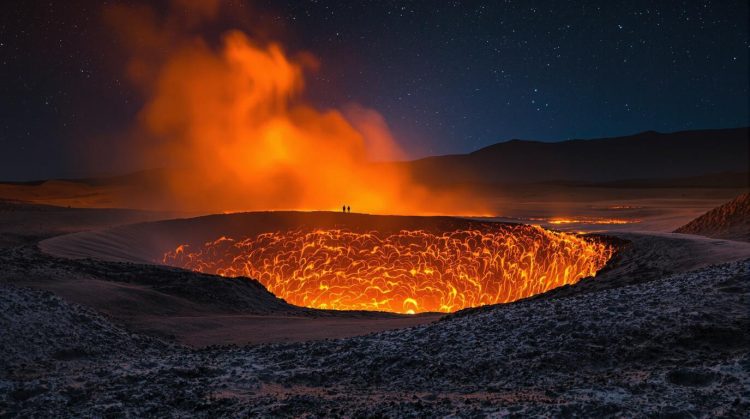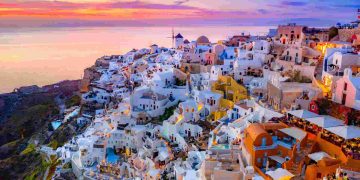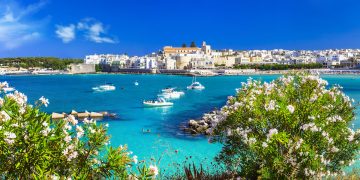When it comes to iconic travel destinations, few places can rival the splendor of Machu Picchu and Bolivia’s hidden gems. Peru’s ancient Inca city, perched high in the Andean Mountains, is a bucket-list destination for many, while Bolivia’s lesser-known treasures, such as the otherworldly Salar de Uyuni and the sacred waters of Lake Titicaca, remain some of the most breathtaking and unique landscapes in the world. Together, these destinations offer an unparalleled opportunity to witness the intersection of history, culture, and natural beauty. This article takes you on a journey through these extraordinary places, revealing what makes Machu Picchu and Bolivia’s hidden gems so unique, and provides tips on how to plan your own unforgettable adventure.
Introduction: A Journey Through Machu Picchu and Bolivia’s Less-Explored Treasures
Machu Picchu and Bolivia are two sides of the same coin when it comes to exploring South America’s wealth of ancient wonders and natural beauty. While Machu Picchu draws millions of visitors annually, its allure remains as strong as ever. In contrast, Bolivia’s treasures, though equally awe-inspiring, are often overshadowed by their more famous counterparts in neighboring countries. However, it’s precisely these less-visited gems that hold their own magic, offering a sense of discovery and wonder for those who venture off the beaten path.
From the mist-covered mountains of Peru to the surreal salt flats of Bolivia, these destinations are deeply connected to their cultural and natural landscapes. Exploring Machu Picchu provides a glimpse into an ancient civilization, while Bolivia’s lesser-known spots allow you to experience an entirely different side of the Andes—one that feels more untouched and mysterious. Both destinations, though distinct, captivate with their timeless beauty and the stories they tell about the people who once inhabited them.
Machu Picchu: The History, Significance, and Allure of Peru’s Ancient Wonder
Machu Picchu needs little introduction. This UNESCO World Heritage site is one of the most famous archaeological wonders in the world and an essential stop for anyone visiting Peru. Yet, its popularity doesn’t diminish its majesty or its profound historical significance.
The Inca Legacy
Built in the 15th century by the Inca Emperor Pachacuti, Machu Picchu is believed to have served as a royal estate, possibly a religious retreat or a ceremonial center. The city, often referred to as the “Lost City of the Incas,” was abandoned in the 16th century following the Spanish conquest of the Inca Empire and remained largely forgotten until its rediscovery by American historian Hiram Bingham in 1911.
What makes Machu Picchu so captivating is not just its breathtaking location but the sophistication of Inca engineering. The city is an architectural marvel, with stone structures that fit perfectly together without mortar, a feat that has baffled archaeologists for centuries. The terraces, temples, and plazas of Machu Picchu are all intricately designed to align with the natural landscape, reflecting the Inca’s deep spiritual connection to the earth.
The Significance of the Site
Machu Picchu’s importance goes beyond its architectural beauty. The site holds immense cultural and spiritual significance for the people of Peru, particularly the indigenous Quechua communities, who consider it a sacred place. It represents the peak of Incan civilization, a reminder of their advanced knowledge of agriculture, astronomy, and engineering.
Visitors to Machu Picchu often feel a sense of reverence as they wander through the ancient ruins. The site is not just a place to explore but a place to reflect on the legacy of a culture that thrived long before the arrival of Europeans. Whether you choose to hike the Inca Trail or take the train from Ollantaytambo, the journey to Machu Picchu is a transformative experience that offers a unique glimpse into the past.
The Allure of the Landscape
Machu Picchu is set against a backdrop of towering green peaks, with mist weaving through the valleys below. The surrounding landscape, known as the Sacred Valley, is just as awe-inspiring as the ruins themselves. Hiking to the site allows you to experience the dramatic beauty of the Peruvian Andes, where lush forests, steep cliffs, and cascading waterfalls create a stunning natural environment.
For those who seek a more intimate experience with the land, hiking the Inca Trail provides an unforgettable opportunity to traverse ancient paths that once connected Machu Picchu to the rest of the Inca Empire. The trail takes you through remote villages, cloud forests, and high-altitude passes, offering a challenging yet rewarding adventure.

Bolivia’s Hidden Gems: Exploring Salar de Uyuni and Lake Titicaca
While Machu Picchu is undeniably iconic, Bolivia offers a number of equally unique and awe-inspiring destinations that remain relatively undiscovered by mass tourism. Among the most extraordinary of these are Salar de Uyuni and Lake Titicaca—two natural wonders that boast unmatched beauty and mystique.
Salar de Uyuni: The World’s Largest Salt Flat
Salar de Uyuni, located in southwest Bolivia, is a place unlike any other. Covering over 10,000 square kilometers, it is the world’s largest salt flat, and it’s one of the most surreal landscapes on Earth. The flat, a vast, shimmering white expanse, was once part of a massive prehistoric lake that evaporated, leaving behind a thick crust of salt. When it rains, the flat becomes a massive mirror, reflecting the sky in a way that creates an almost dreamlike experience for those who visit.
The sheer scale of Salar de Uyuni is staggering. As far as the eye can see, the salt flats stretch into the horizon, creating a seemingly infinite sea of white. This surreal environment is perfect for photographers looking to capture otherworldly landscapes, and the vast emptiness gives visitors a sense of tranquility and isolation that is hard to find elsewhere.
Nearby, visitors can also explore the Isla Incahuasi, a rocky island covered in giant cacti, which provides a striking contrast to the salt flats. For those interested in astronomy, Salar de Uyuni offers some of the clearest skies in the world, making it an ideal destination for stargazing.
Lake Titicaca: The Sacred Waters of the Andes
Lake Titicaca, located on the border between Bolivia and Peru, is the highest navigable lake in the world and holds deep cultural and spiritual significance for the indigenous communities living on its shores. The lake is revered by the Aymara and Quechua peoples, who believe it to be the birthplace of the sun.
Lake Titicaca’s beauty is evident in its crystal-clear waters and the surrounding mountains, which create a serene and peaceful atmosphere. The lake is home to a number of islands, each with its own unique traditions. Isla del Sol (Island of the Sun) is one of the most important, as it is thought to be the birthplace of the first Inca emperor. Visitors can hike along ancient Inca paths and visit temples and ruins that date back to pre-Columbian times.
Another highlight is Isla de la Luna (Island of the Moon), a quieter and more remote destination where visitors can explore ancient ruins and enjoy breathtaking views of the lake and its surrounding landscape.
Travel Tips: How to Plan a Trip to These Two Bucket-List Destinations
Planning a trip to Machu Picchu and Bolivia’s hidden gems requires some preparation, as both destinations are remote and require a bit of effort to reach. Here are some tips to help you make the most of your journey:
- Acclimatization: Both Machu Picchu and Bolivia’s hidden gems, especially Salar de Uyuni and Lake Titicaca, are located at high altitudes. Make sure to allow time to acclimatize to avoid altitude sickness. Drink plenty of water, eat light meals, and take it easy for the first few days.
- Travel Insurance: Given the remote nature of these destinations, it’s important to have comprehensive travel insurance that covers emergencies, especially if you plan to hike or engage in adventurous activities.
- Tours and Guides: While it’s possible to visit Machu Picchu independently, many travelers choose to book guided tours, especially if they plan to hike the Inca Trail. For Bolivia, booking a guided tour of Salar de Uyuni is highly recommended, as the region can be difficult to navigate without local knowledge.
- Timing Your Visit: The best time to visit both Machu Picchu and Bolivia is during the dry season (April to October), when the weather is more stable, and the landscape is at its most beautiful.
Conclusion
Machu Picchu and Bolivia’s hidden gems offer unique travel experiences that captivate with their breathtaking beauty, rich cultural history, and profound significance. Whether you’re marveling at the Inca engineering of Machu Picchu, gazing across the salt flats of Salar de Uyuni, or exploring the sacred waters of Lake Titicaca, these destinations provide an unparalleled opportunity to connect with both nature and history. With careful planning, these two bucket-list spots can transform your travel experience into a journey of discovery, adventure, and awe.





















